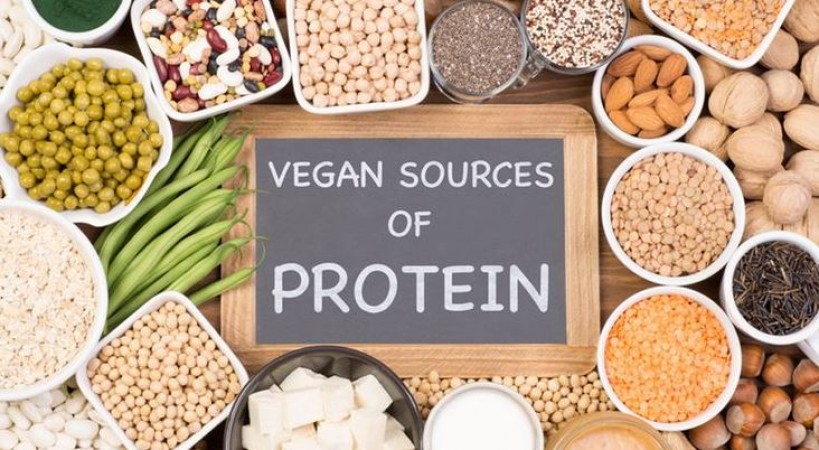
Introduction
In recent years, there has been a growing interest in plant-based diets and alternatives to traditional animal-based protein sources. Whether due to health concerns, ethical considerations, or environmental awareness, more people are exploring the world of plant-based protein alternatives. This article aims to shed light on the various options available, their nutritional benefits, and how they can be incorporated into your daily meals.
What are Plant-Based Protein Alternatives?
Plant-based protein alternatives are food sources that provide protein but are derived from plants instead of animals. They offer a wide range of options for individuals seeking to reduce or eliminate their consumption of animal products. These alternatives can include soy products, legumes and pulses, nuts and seeds, quinoa, whole grains, and plant-based meat substitutes.
Why Choose Plant-Based Protein Alternatives?
There are several compelling reasons to consider incorporating plant-based protein alternatives into your diet. Firstly, they offer a sustainable and environmentally friendly option. The production of plant-based proteins typically requires fewer resources and generates fewer greenhouse gas emissions compared to animal farming. Secondly, plant-based protein alternatives are often cholesterol-free and lower in saturated fat, making them heart-healthy choices. Additionally, they provide ample dietary fiber, vitamins, minerals, and antioxidants.
Popular Plant-Based Protein Sources
3.1 Soy Products
Soy products, such as tofu, tempeh, and edamame, are excellent sources of plant-based protein. They are versatile and can be used in various dishes, from stir-fries to salads and sandwiches.
3.2 Legumes and Pulses
Legumes and pulses, including chickpeas, lentils, black beans, and kidney beans, are nutrient-dense sources of plant-based protein. They can be incorporated into soups, stews, and grain-based dishes to add texture and flavor.
3.3 Nuts and Seeds
Nuts and seeds, such as almonds, walnuts, chia seeds, and hemp seeds, provide protein along with healthy fats. They can be enjoyed as snacks, added to smoothies, or used as toppings for salads and desserts.
3.4 Quinoa and Other Whole Grains
Quinoa is a complete protein source, meaning it contains all essential amino acids. Other whole grains like brown rice, amaranth, and millet also offer protein and can be used as a base for various dishes.
3.5 Plant-Based Meat Substitutes
Plant-based meat substitutes, like veggie burgers, sausages, and deli slices, have gained popularity in recent years. They are often made from soy, wheat, or pea protein and provide a meat-like texture and taste.
Nutritional Benefits of Plant-Based Proteins
4.1 High-Quality Amino Acid Profile
Plant-based protein alternatives can offer a wide range of essential amino acids necessary for the body's proper functioning. By combining different plant-based protein sources, you can ensure a complete amino acid profile in your diet.
4.2 Rich in Fiber
Plant-based proteins are generally high in dietary fiber, which promotes digestive health, aids in weight management, and helps control blood sugar levels.
4.3 Lower in Saturated Fat and Cholesterol
Unlike many animal-based protein sources, plant-based alternatives are naturally low in saturated fat and cholesterol. This can contribute to maintaining a healthy cardiovascular system.
4.4 Packed with Essential Nutrients
Plant-based proteins often come bundled with essential nutrients like vitamins, minerals, and antioxidants. These nutrients support overall health, boost immunity, and fight oxidative stress in the body.
Incorporating Plant-Based Protein Alternatives into Your Diet
There are various creative ways to incorporate plant-based protein alternatives into your daily meals. Here are a few ideas to get you started:
5.1 Plant-Based Protein Smoothies and Shakes
Blend plant-based protein powders with fruits, vegetables, and plant-based milk for a nutritious and filling smoothie or shake.
5.2 Salads and Grain Bowls
Add cooked legumes, quinoa, nuts, and seeds to your salads and grain bowls for a protein boost. Combine them with a variety of vegetables and dressings for added flavor.
5.3 Plant-Based Protein Patties and Burgers
Prepare homemade veggie patties using legumes, grains, and spices. These can be pan-fried or baked and enjoyed as a delicious and protein-rich burger alternative.
5.4 Stir-Fries and Curries
Incorporate tofu, tempeh, or plant-based meat substitutes into stir-fries and curries for a protein-packed main course. Combine them with vibrant vegetables and flavorful sauces.
5.5 Baking with Plant-Based Proteins
Experiment with baking recipes by substituting traditional ingredients with plant-based alternatives. For example, use applesauce or flaxseed meal as egg replacements, and almond flour or soy milk as dairy substitutes.
Tips for Cooking with Plant-Based Protein Alternatives
When cooking with plant-based protein alternatives, consider the following tips to enhance their flavors and textures:
6.1 Seasoning and Marinating
Use spices, herbs, and marinades to infuse flavors into plant-based proteins. This can help mimic the taste of animal-based proteins and make your dishes more enjoyable.
6.2 Texture and Mouthfeel
Experiment with different cooking techniques to achieve desired textures. For instance, baking or grilling can create a crispy exterior, while simmering in sauces can provide a tender and juicy result.
6.3 Cooking Methods and Temperatures
Each plant-based protein source may require specific cooking methods and temperatures. Follow instructions or recipes to ensure optimal results and avoid overcooking or undercooking.
6.4 Pairing with Complementary Flavors
Consider pairing plant-based proteins with complementary flavors and ingredients. For example, combine tangy sauces with tofu or add roasted vegetables to legume-based dishes for added depth of flavor.
6.5 Experimenting with Recipes
Don't be afraid to try new recipes and adapt them to your taste preferences. Explore online resources, cookbooks, and cooking communities for inspiration and guidance.
Conclusion
The world of plant-based protein alternatives offers a diverse and nutritious array of options for those looking to embrace a more sustainable and healthy diet. By incorporating soy products, legumes, nuts, seeds, grains, and plant-based meat substitutes into your meals, you can enjoy the benefits of plant-based proteins while exploring a wide range of flavors and textures.
Incorporating these alternatives into your diet can provide high-quality amino acids, fiber, and essential nutrients, all while reducing the environmental impact associated with animal agriculture. So why not embark on a culinary adventure and explore the possibilities of plant-based protein alternatives today?
Travel: Sustainable Tourism: Exploring Eco-Friendly Travel Options